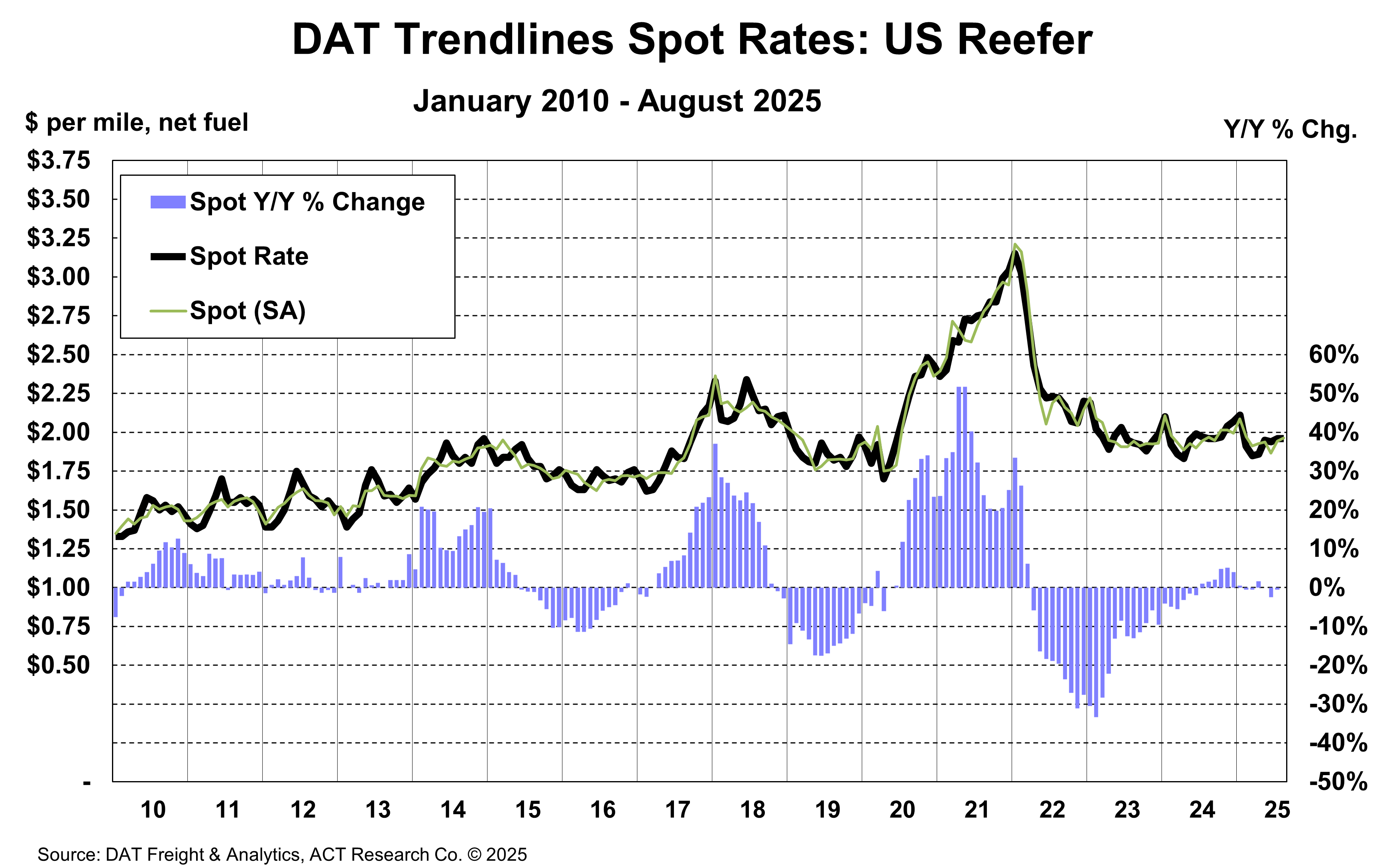
Refrigerated Rates
Reefer Rates - September 2025
September 17, 2025
Reefer Truckload (TL) Sector – September 2025
The reefer market softened in August 2025, as produce season tapered and discretionary cold chain volumes came under pressure. While temperature-controlled freight remains more resilient than dry van or flatbed, weak consumer demand and oversupplied capacity are limiting pricing momentum. Below are the latest insights on spot and contract reefer rates.
Spot Market Rates
Reefer spot rates fell 5¢ in August to $1.83 per mile, down 1.4% from year-ago levels. Load postings remained above prior-year comparisons but trended lower month-over-month, reflecting easing seasonal demand. The load-to-truck ratio slipped further, underscoring looser market conditions despite equipment constraints tied to high trailer costs and slow build activity.
Food and healthcare-related demand continue to support reefer volumes, but broader retail categories are softening, particularly in beverages and discretionary perishables. This is keeping rate pressure elevated despite reefer’s relative strength compared to other modes.

Contract Market Rates
Reefer contract rates held flat again in August, remaining aligned with 2024 levels. Shippers are holding firm on cost control strategies, while carriers continue to contend with higher operating costs, including fuel, equipment, and maintenance. The segment’s stable demand base in food and pharmaceuticals is helping provide a pricing floor, but shippers remain unwilling to extend contracts at higher rates without clearer signs of volume recovery.
Outlook
The reefer sector is expected to remain more insulated than dry van or flatbed, but pricing power is limited. With consumer spending patterns shifting and seasonal demand softening, spot rates are likely to remain under pressure into Q4. Contract pricing should remain stable through year-end, but upside will depend on holiday-driven freight and whether capacity corrections begin to materialize.
Longer term, tariff-driven cost inflation and regulatory uncertainty around EPA 2027 rules will weigh on investment decisions, keeping fleet replacement selective. Without a meaningful rebound in consumer-driven cold chain demand, the reefer market is expected to remain flat to slightly weaker into early 2026.
To see how reefer rates change in the future, and for detailed analysis and forecasts for truckload, less-than-truckload, and intermodal, see ACT's freight & transportation forecast.
Reefer capacity has loosened modestly since peak produce season, with August load postings trending lower and spot rates slipping 5¢. Even so, the segment remains more resilient than dry van, supported by steady demand from food distribution, healthcare, and cold chain freight. Constrained trailer availability and elevated operating costs are keeping downward pressure in check, allowing reefer rates to hold firmer than broader truckload benchmarks despite a softer seasonal backdrop.

Tim Denoyer
Vice President & Senior Analyst

Resources
Whether you’re new to our company or already a subscriber, we encourage you to take advantage of all our resources.